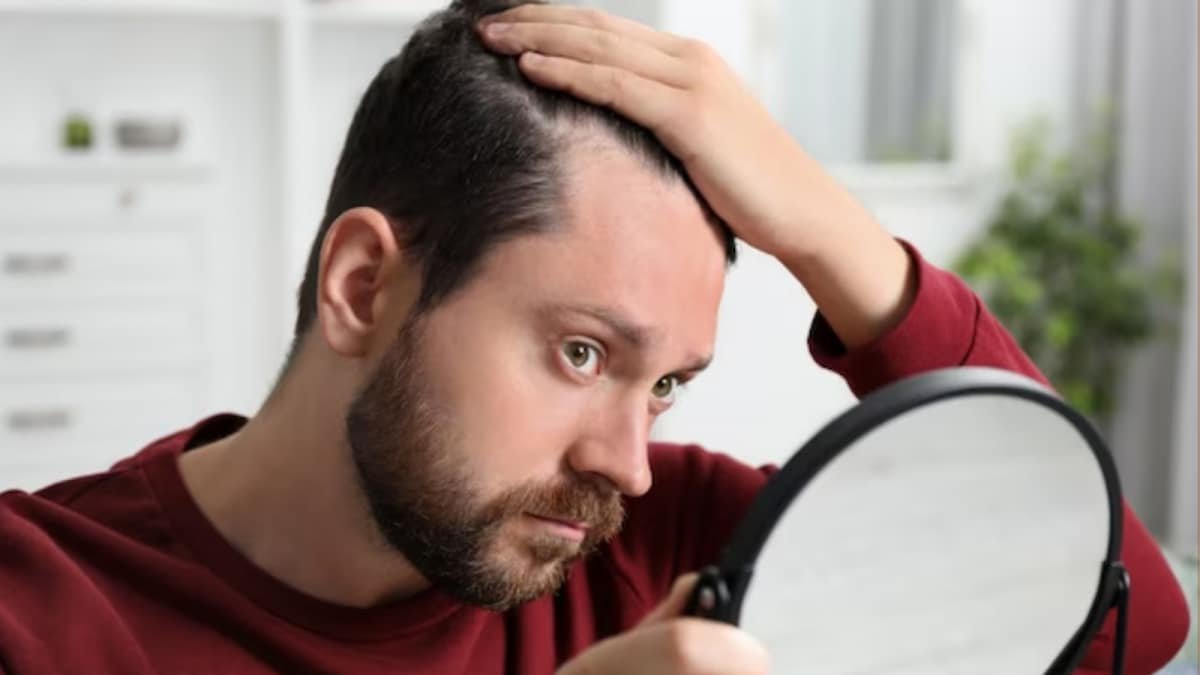Last Updated:June 01, 2025, 14:33 IST
Losing a certain amount of hair daily is part of the body’s natural renewal process. However, when the hair loss is sudden and significant, it signals something deeper.
Losing 50-100 hairs daily is normal.
Hair fall is a reality we all face – strands on the pillow, the comb, or the shower floor are often brushed off as routine. And to an extent, they are. Losing a certain amount of hair daily is part of the body’s natural renewal process. But at what point does this ordinary shedding signal something deeper?
In an age where beauty standards and wellness trends dominate conversations, it’s easy to panic over a few extra strands. However, before sounding the alarm, it’s essential to understand the science behind hair fall. The natural hair growth cycle, comprised of growth, rest, and shedding, means we lose anywhere from 50 to 100 hairs each day. This cycle is influenced by everything from genetics and hormones to stress, nutrition, and environmental factors.
But excessive hair loss, when it becomes persistent, noticeable, and affects confidence, deserves attention. Whether it’s a temporary response to a lifestyle shift or the sign of an underlying condition, identifying the root cause is the first step to finding real solutions.
The Hair Growth Cycle
Dr Viral Desai, board-certified super specialist, cosmetic plastic and hair transplant surgeon and medical director at DHI India, explains the hair growth cycle. He explains that hair grows from follicles and is nurtured by tiny blood vessels and controlled by hormones. The growth cycle consists of three phases:
- Anagen Phase (Growth): This is the active phase of hair growth, where cells in the root divide and create new hair. It can last anywhere from two to six years, depending on individual factors.
- Catagen Phase (Dormant): This is a short transitional phase that lasts about two to three weeks, where the hair follicle shrinks and detaches from the dermal papilla.
- Telogen Phase (Rest): This is the resting phase, where the hair follicle is released, and the hair falls out. It lasts about 100 days.
What’s Normal?
Losing 50-100 hairs per day is normal. However, excessive hair shedding can be triggered by significant stressors. Dr Desai explains
- Major weight loss: Crash diets or rapid weight loss can cause hair shedding due to nutrient deficiencies and stress.
- Childbirth: Hormonal changes after childbirth can lead to excessive hair shedding.
- Emotional stress: Ongoing stress can disrupt the hair growth cycle, leading to hair loss.
- High fever: Illnesses that cause high fever can trigger hair shedding.
- Surgery: Major surgery can cause physical stress, leading to hair loss.
- Recovering from an illness: Certain illnesses, such as thyroid disorders or autoimmune diseases, can cause hair loss.
- Stopping birth control pills: Hormonal changes after stopping birth control can lead to hair shedding.
- Other stressors: Additional stressors that can trigger telogen effluvium include significant changes in diet, sleep deprivation, and emotional trauma.
He notes that this shedding is usually temporary, and hair regains its normal fullness within six to nine months.
What’s Not Normal?
Dr Desai explains that hair loss, known as anagen effluvium, occurs when the normal hair growth cycle is abruptly disrupted, often during the active growth (anagen) phase. Unlike natural shedding, this form of hair loss tends to be sudden and significant, typically pointing to an underlying issue. Here are some of the most common causes:
- Genetics: Hereditary hair loss, often referred to as androgenetic alopecia, is one of the most prevalent causes.
- Medications and Medical Treatments: Certain treatments, especially chemotherapy and radiation therapy, can interfere with rapidly dividing hair follicle cells, leading to sudden and widespread hair loss.
- Hairstyles and Hair Care Practices: Wearing tight hairstyles (like braids, ponytails, or buns) or using harsh chemical treatments and heat styling tools can damage the hair shaft and follicles.
- Autoimmune Conditions: Disorders such as alopecia areata occur when the immune system mistakenly attacks healthy hair follicles, leading to patchy or widespread hair loss.
- Trichotillomania: This is a psychological condition characterised by an uncontrollable urge to pull out one’s hair, often triggered by stress or anxiety.
When To Seek Help?
If you’re noticing gradual thinning, a widening part, or the appearance of bald spots or a receding hairline, it may be time to pay closer attention to your hair health. Dr Desai says, “Sudden hair loss – such as clumps falling out or the rapid development of bald patches – is also a red flag. Excessive shedding, typically more than 100 to 150 hairs per day, should not be ignored, especially if it’s accompanied by pain, itching, or noticeable changes in hair texture, like increased brittleness or weakness.”
Additionally, if hair loss begins after starting a new medication, it could be a side effect worth discussing with a healthcare provider. In any of these cases, consulting a professional is essential. Early evaluation and intervention can help identify the root cause and offer effective treatments to manage hair loss and support healthy regrowth.
- Location :
Delhi, India, India
- First Published:
#Science #Hairfall #Whats #Normal #Whats #Seek



